Far away from the rush of modern life, nestled in the highlands of southwestern Gansu Province, lies a place where the sky stretches endlessly, the wind smells of wild herbs, and the whisper of prayer wheels hums through valleys. This is Gannan Tibetan Autonomous Prefecture, a gentle land where Tibetan culture, nature, and faith all intertwine into something that feels timeless.
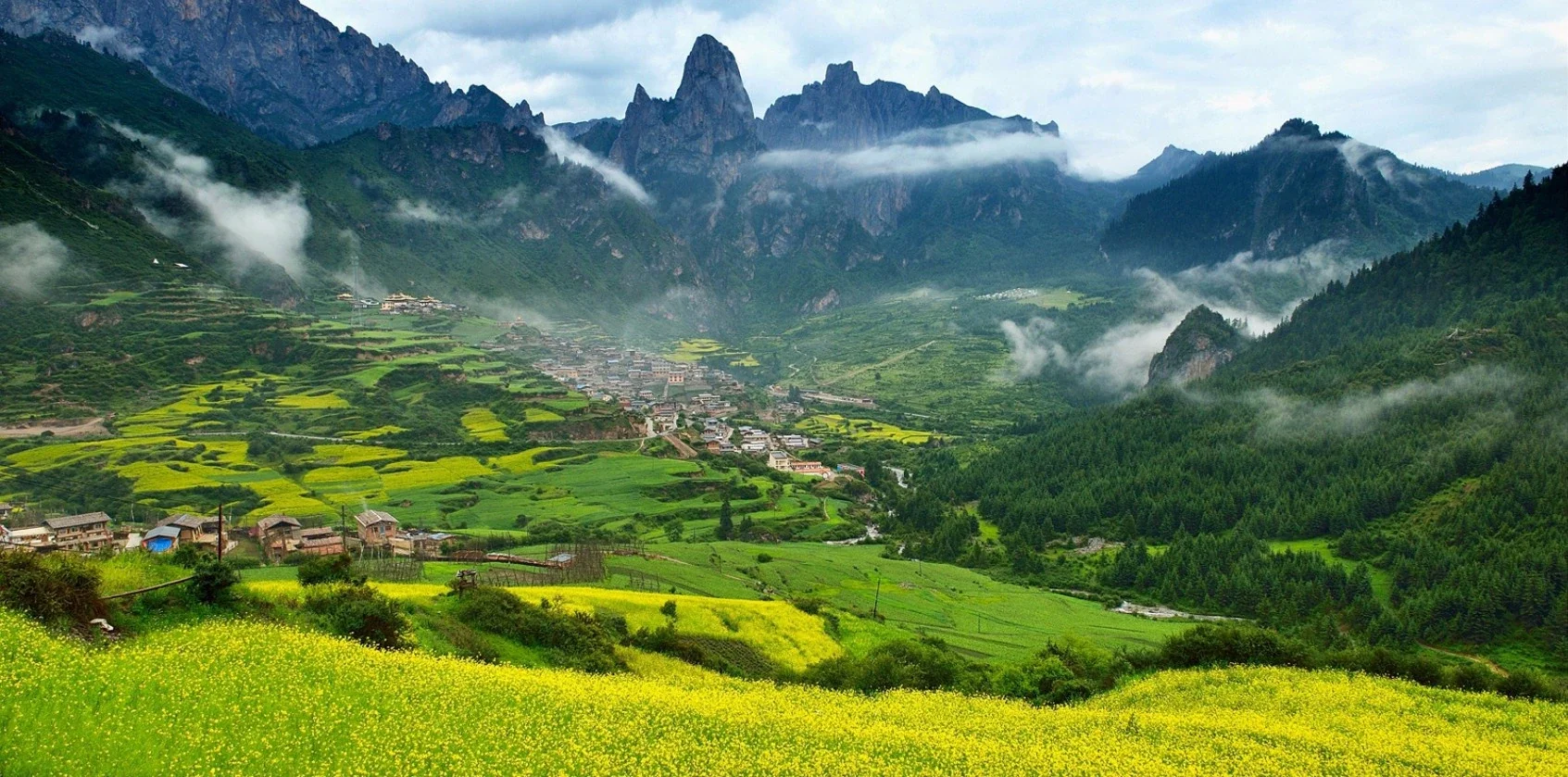
Known as the “Little Tibet of Gansu,” Gannan is a dreamscape of golden grasslands, sacred temples, hidden canyons, and ancient villages wrapped in mist. With a lower altitude than Lhasa but a similar spiritual depth, it is a perfect destination for travelers curious about Tibetan Buddhism, pastoral life, and the quiet beauty of northwest China.
Where Faith Meets Sky: Tibetan Buddhism in Gannan
At the heart of Gannan’s identity is its role as a cradle of Tibetan Buddhism. The most prominent symbol of this is Labrang Monastery in Xiahe County, one of the six great monasteries of the Gelug sect. Labrang is both a place of learning and a living community, with hundreds of monks studying Buddhist philosophy, astrology, medicine, and art. Its long corridor of over 1,700 prayer wheels draws pilgrims from far and wide. Chanting can be heard at dawn, and the air is heavy with the scent of incense and butter lamps.
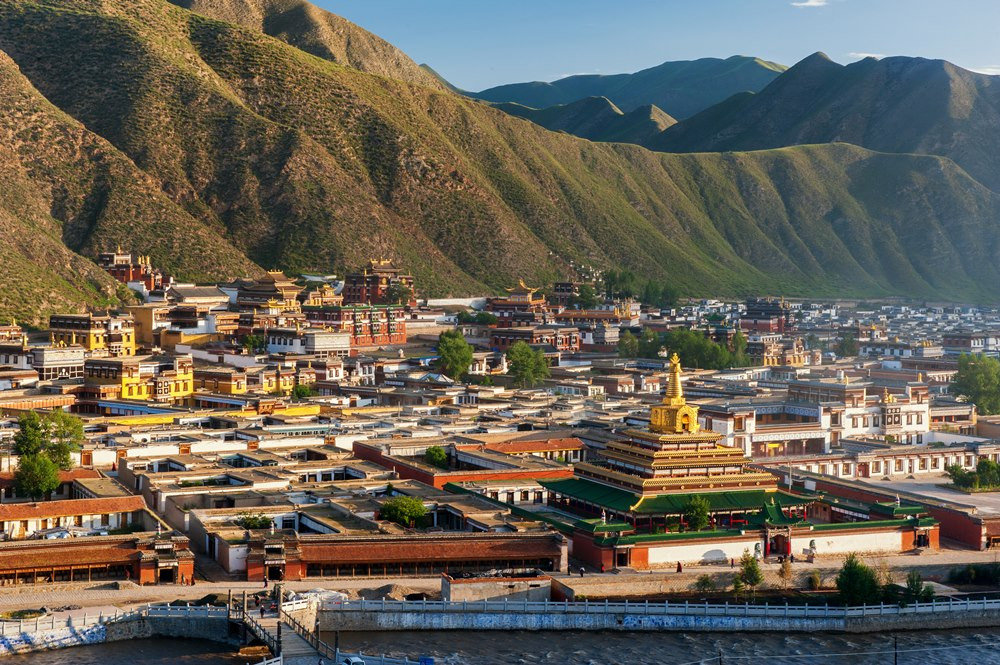
Beyond Labrang, other sacred spots like Langmu Monastery, perched at the edge of Gansu and Sichuan, offer dramatic alpine backdrops and a quiet, contemplative atmosphere. The ancient Ganjia Grassland, with the ruins of Bajiao City and sky-colored temples, continues to preserve early Tibetan cultural traces. In Gannan, spirituality is not confined to temples but lives in everyday life—woven into clothes, echoed in songs, and painted across hillside stupas.
Endless Meadows and Mirror Lakes: Nature at its Softest
The landscapes of Gannan seem painted with a watercolor brush—soft, layered, and dreamlike. Sangke Grassland, just outside Xiahe, is a rolling sea of green in summer, dotted with grazing yaks, white tents, and prayer flags fluttering in alpine breezes. Wildflowers bloom under horses’ hooves, and the vast blue sky feels just an arm’s reach away.
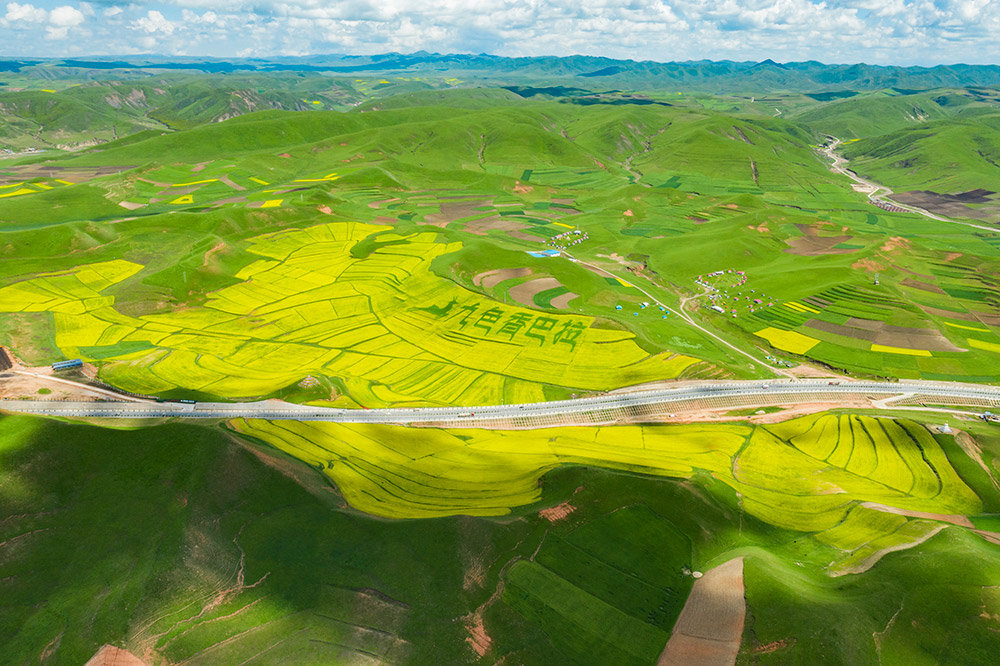
Farther west, the high-altitude wetlands of Maqu County, considered the source of the Yellow River, spread like a silver ribbon through the plateau. These marshlands, shared in part with neighboring Sichuan, form part of the larger Zoigê Wetland ecosystem and attract migratory birds in flocks.
In the autumn months, golden grasses blanket the land, and the horizon glows amber in the evening sun. Whether you’re walking along a river bend or watching the fog rise over distant hills, Gannan’s natural beauty wraps around you with gentle stillness.
Tucked-Away Villages and Whispering Canyons
While the grasslands breathe wide and open, the heart of Gannan beats in its hidden villages and secret gorges. One of the most magical is Zagana, a stone village cradled in the sharp mountains of Diebu County. Here, homes are built from timber and rock, perched along slopes as if drawn by a child’s hand. Mist lingers in the valleys, and mornings are greeted with woodsmoke and the distant clink of prayer beads.
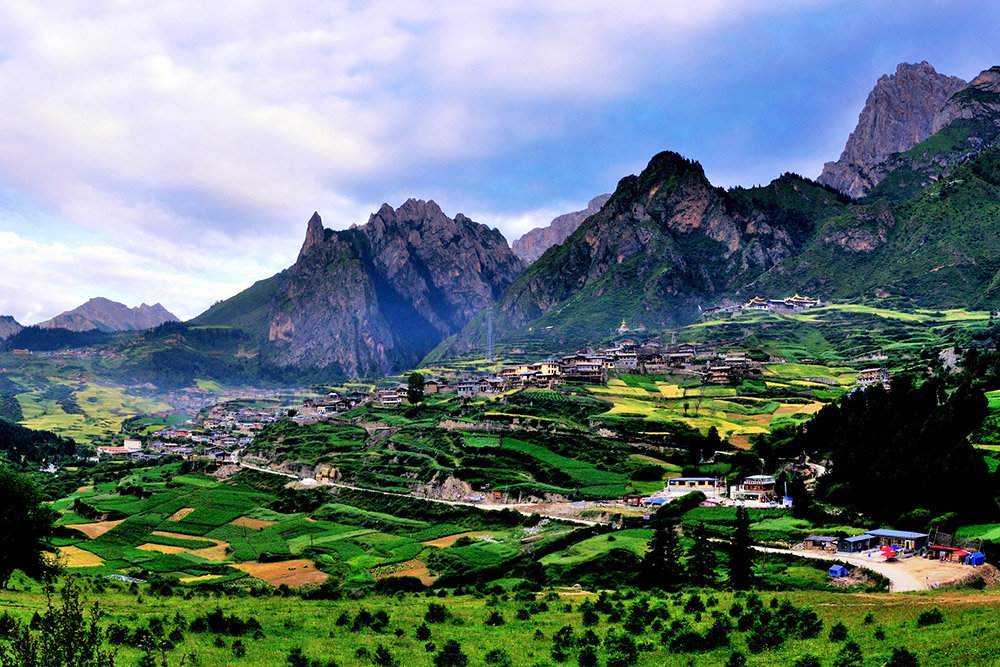
Nearby, the Namo Gorge cuts dramatically through red earth, its cliffs carved by wind and time, leading to quiet corners only a few travelers ever reach. In Yeliguan, river paths snake through forested cliffs, leading to ancient caves and curious rock formations. Each step deeper into these regions feels like walking backward through centuries.
These lesser-known parts of Gannan offer a slower, more intimate way of exploring China—through storytelling, shared meals, and a sense of belonging that transcends words.
The Sound of Celebration: Folk Customs and Festivals
Gannan is alive with intangible cultural heritage, especially during its lively festivals. During the Tibetan New Year (Losar), entire towns burst into color with family gatherings, ritual dances, and offerings piled high with flour cakes and butter sculptures. In summer, the Sixth-Month Festival at Labrang sees massive thangka paintings unfurled in temple courtyards as pilgrims crowd in to receive blessings. Monks chant, horns sound across the hills, and every face glows with reverence.
Outside of festivals, daily life still carries the quiet rhythm of tradition. Families spin wool, herd yaks, and craft everything from silver ornaments to prayer flags. Songs and dances are passed from grandmother to granddaughter, not to preserve culture, but simply because they are part of life.
Taste of Gannan: Food That Warms the Soul
Traveling through Gannan means eating from the land, the season, and the heart. In Tibetan homes and roadside eateries, you’ll find steaming bowls of yak meat noodles, buttery plates of tsampa (roasted barley flour), and cups of salted butter tea warming every table. The barley used for tsampa is often harvested from highland terraces and ground by hand, giving each bite a smoky richness.
You may also find Tibetan yogurt, slightly sour and surprisingly creamy, perfect with a spoonful of local honey. In towns like Xiahe or Hezuo, street vendors offer snacks such as sweet glutinous rice cakes or boiled dumplings wrapped in cabbage. Meals are shared slowly, with stories and second helpings always on the menu.
Top Places to Visit in Gannan
Labrang Monastery
This sprawling temple complex is Gannan’s spiritual heart. With its long corridors of prayer wheels, golden rooftops, and daily rituals, Labrang invites travelers into a world of devotion and monastic life. Visitors can join a local guide or quietly observe morning ceremonies as monks file through candlelit halls.
Sangke Grassland
Open, quiet, and golden in the sun, Sangke is a place to ride horses, meet nomadic families, and sip milk tea under endless sky. Horse festivals are held in summer, and it’s one of the best places to experience Gansu’s highland culture up close.
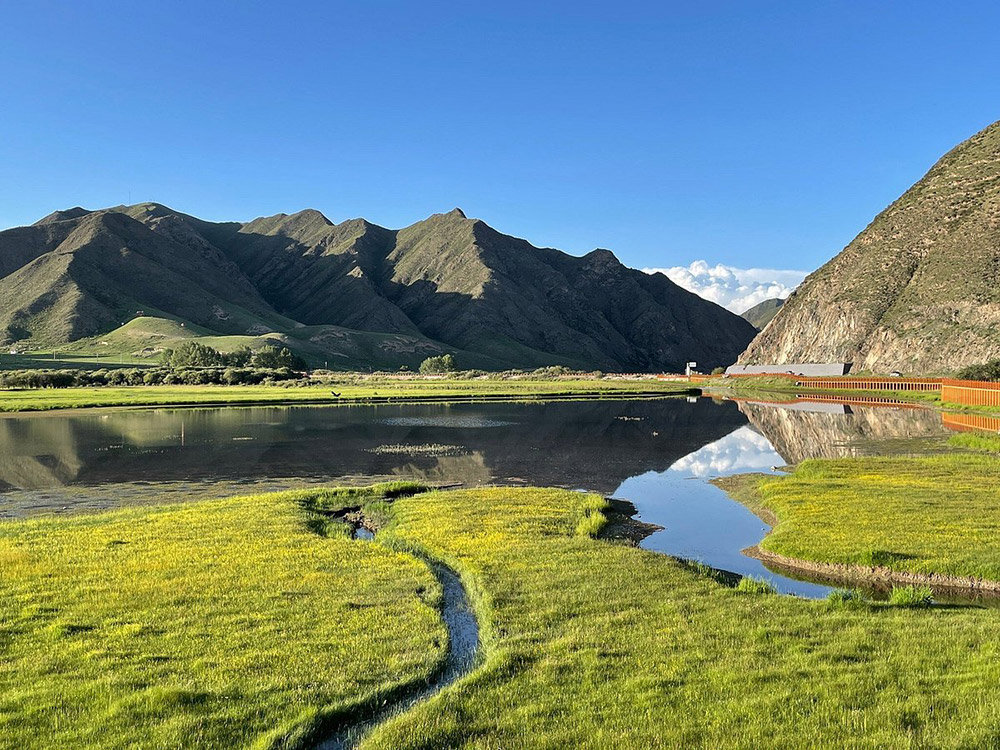
Zagana Village
Like a painting come to life, Zagana sits in a deep valley surrounded by jagged peaks. The village is peaceful and picture-perfect, with hiking paths, cozy guesthouses, and the soothing charm of rural Tibetan life. It’s also a favorite of photographers and nature lovers.
Langmu Monastery
Langmu bridges Gansu and Sichuan, both geographically and spiritually. Surrounded by alpine meadows and rocky cliffs, it feels remote and sacred, with both Tibetan Buddhist and Bon temples coexisting side by side. Early mornings are the best time to wander the village, when incense fills the air.
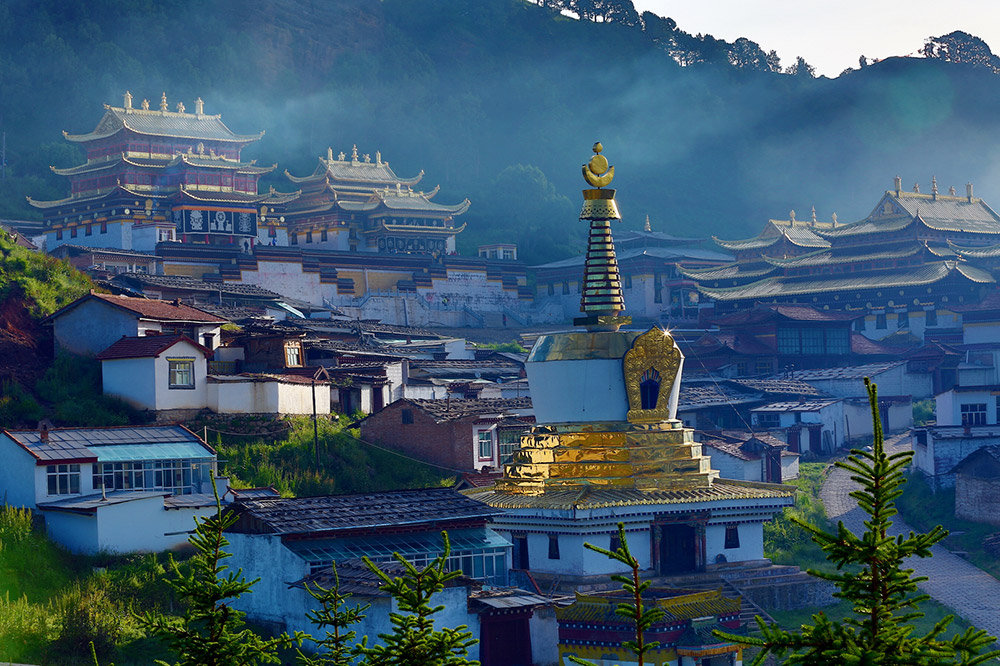
Maqu Wetland and Yellow River Source
In Maqu County, the Yellow River begins its long journey through China. The wetlands here are vast and glistening, home to wild birds and blooming sedges. It’s a gentle place, where water, sky, and earth blend into one.
Why Gannan is a Place to Remember
Gannan is not loud. It doesn’t try to impress with grand statements or towering buildings. Instead, it welcomes you with soft winds, distant chants, and open-hearted people. Here, you can learn how the land and spirit live together, how traditions breathe, and how silence can sometimes speak the loudest.
If you’re looking for Tibetan culture without the crowds, Chinese grassland adventures without the extremes, or a journey that feels both sacred and serene, Gannan in Gansu Province might be your perfect escape.
Contact us today to craft your dream China adventure!

